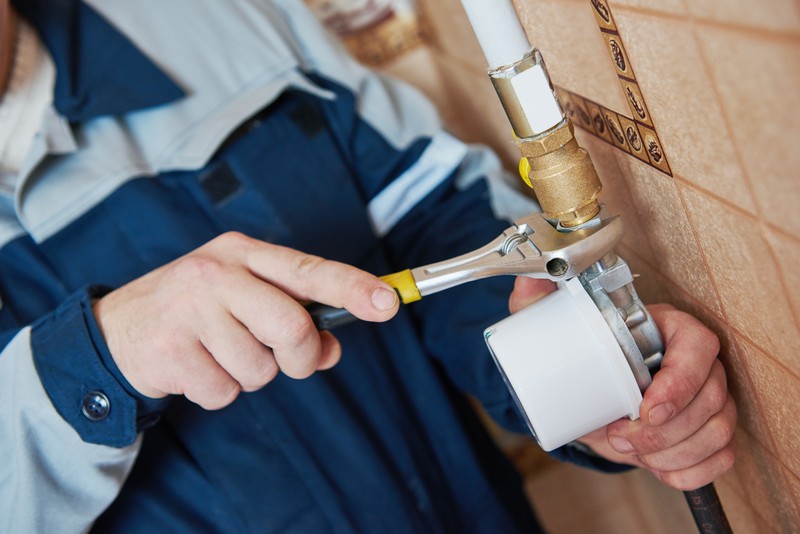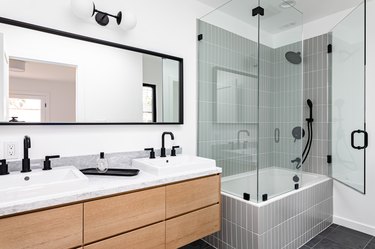They are making a few great observations on 7 Plumbing Industry Trends You Need To Know as a whole in the article in the next paragraphs.

Introduction
The pipes market is undertaking a transformative stage driven by technical improvements and expanding problems for sustainability and effectiveness. This short article checks out arising patterns and advancements forming the future of pipes.
Smart Plumbing Solutions
Including clever innovation into plumbing systems makes it possible for remote tracking, leak detection, and automated upkeep. Smart sensors and IoT (Web of Points) devices enable property owners and plumbings to check water usage and find issues in real-time, causing more efficient resource management and proactive maintenance.
Water Efficiency Solutions
With enhancing emphasis on water preservation, cutting-edge remedies are being created to decrease water wastefulness in plumbing systems. High-efficiency components, greywater recycling systems, and wise watering controllers are amongst the technologies aiding customers decrease their water impact while maintaining comfort and benefit.
Lasting Products
The change in the direction of sustainability reaches pipes materials, with a growing choice for green choices. Eco-friendly piping materials, such as PEX (cross-linked polyethylene) and HDPE (high-density polyethylene), deal longevity and resistance to rust without endangering ecological integrity.
Anticipating Maintenance
Anticipating upkeep strategies leverage information analytics and artificial intelligence algorithms to prepare for and avoid pipes issues before they occur. By analyzing historical data and efficiency metrics, predictive maintenance formulas can identify patterns and abnormalities, enabling positive treatments to stay clear of expensive repair work and disturbances.
Augmented Fact in Plumbing
Increased Truth (AR) innovation is reinventing pipes by giving professionals with real-time visual guidance for repairing and fixing jobs. AR-enabled wise glasses or mobile applications overlay digital information onto the physical atmosphere, aiding plumbings envision pipeline layouts, recognize concealed leaks, and implement repair services with precision.
Effect of 3D Printing
The advent of 3D printing has presented brand-new opportunities in producing pipes parts. From custom-designed fixtures to intricate pipeline installations, 3D printing enables rapid prototyping and on-demand manufacturing, lowering preparations and enabling greater customization in plumbing design.
Health and Safety Qualities
In reaction to increased problems for health and safety, pipes components are including attributes such as antimicrobial surface areas, touchless operation, and self-cleaning mechanisms. These developments not only improve health however additionally advertise customer comfort and convenience.
Hygiene-focused Fixtures
Touchless taps, self-sanitizing bathrooms, and antimicrobial surfaces are becoming significantly common in property and industrial settings, reducing the threat of bacterium transmission and promoting a cleaner, much healthier setting.
Water Quality Monitoring
Innovations in water quality tracking technologies allow homeowners to keep an eye on the pureness and safety and security of their supply of water in real-time. Smart water high quality sensors can find contaminants, pH degrees, and temperature variations, encouraging customers to take aggressive actions to guarantee water safety.
Remote Pipes Providers
Remote diagnostics and virtual assistance are transforming the means pipes services are supplied. With video conferencing and remote gain access to modern technologies, plumbers can repair issues, give support for DIY fixings, and even carry out remote inspections, providing higher accessibility and benefit to home owners.
Challenges and Opportunities
While pipes technologies hold tremendous assurance, they likewise present challenges such as information privacy concerns, governing compliance, and the need for workforce training. Dealing with these obstacles needs partnership in between sector stakeholders and regulative bodies to guarantee risk-free and liable execution of brand-new modern technologies.
Regulative Landscape
Regulatory frameworks play an essential function fit the adoption of plumbing innovations, with requirements and codes controling every little thing from water effectiveness to item safety and security. As technologies remain to develop, regulatory bodies must adjust to make sure consumer protection and ecological stewardship.
Future Expectation
The future of plumbing is identified by proceeded innovation and combination with various other markets such as IoT, renewable resource, and building automation. By accepting sustainable methods, leveraging emerging modern technologies, and prioritizing user-centric style, the pipes sector is poised to resolve the progressing demands of culture while reducing its environmental footprint.
Final thought
Finally, the future of pipes is specified by a merging of modern technology, sustainability, and user-centric layout. By embracing wise solutions, sustainable materials, and proactive upkeep practices, the pipes market can improve efficiency, advertise safety and security, and contribute to a more sustainable future.
Plumbing Technology Trends 2024: Shaping a Sustainable and Efficient Future
Plumbing Technology: A Beacon of Innovation
Intelligent Plumbing Systems: The adoption of smart plumbing solutions offers unparalleled control over water usage, preventing waste and ensuring optimal efficiency. These systems can be installed by qualified contractors and may require technicians with expertise in new codes for proper functionality. Eco-Friendly Piping: Innovations in piping materials, like PEX and recycled content options, are making plumbing systems more sustainable. These materials are not only better for the environment but also durable and flexible, making them easier to install and less likely to need repairs. Automated Leak Detection: New plumbing technologies include systems that can automatically detect leaks. This is a big deal because it means we can fix them before they cause a lot of damage or waste too much water. It’s all about catching problems early and saving resources. Energy-Efficient Water Heaters: There’s also a big push towards devices that use less energy. This includes solar and tankless models, which provide hot water only when it’s needed, cutting down on energy use and costs. Plumbers: Champions of Sustainability
Adopting Green Practices: Contractors who specialize in sustainable plumbing can ensure your system meets the latest regulations and utilizes efficient valves. They undergo comprehensive training programs that emphasize sustainability in practices like eco-friendly installations. Water Conservation Efforts: Through the installation of high-efficiency appliances, plumbers are essential in reducing water consumption and promoting conservation. When repairing or replacing older fixtures, plumbers can recommend high-efficiency options that comply with local codes. Pipe: The Lifeline of Modern Plumbing
Innovative Pipe Solutions: The use of environmentally friendly and durable materials in pipes, like PEX and recycled content options, reduces the ecological footprint and enhances water quality. These innovative pipe solutions may require specialized repair techniques from qualified plumbers familiar with the materials. Advanced Leak Detection: Modern pipes are now more frequently equipped with sensor technology that can identify leaks early, conserving water and preventing damage. Early leak detection can save homeowners money on repair costs and potential water damage. Water Heater: At the Forefront of Efficiency
Renewable Energy Heaters: Solar heaters and other renewable energy-powered models are becoming more common, offering an eco-friendly alternative to traditional methods. These benefit the environment but can also potentially lead to lower water bills through reduced energy use. On-Demand Heating: Tankless heaters have gained popularity for their ability to provide hot water as needed, minimizing energy waste. This innovative technology eliminates the need for a large storage tank, freeing up valuable space and simplifying the installation process for qualified plumbers. https://intownplumbingtx.com/articles/plumbing-technology-trends/

As an avid reader on 7 Plumbing Industry Trends You Need To Know, I figured sharing that piece of content was really helpful. Enjoyed reading our piece of writing? Please share it. Let someone else find it. Many thanks for being here. Revisit us soon.
Request Service